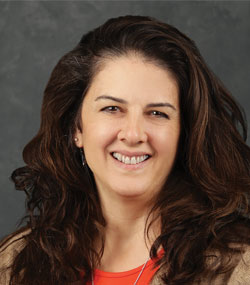
It is concerning to me when my friends and family have the notion that dairy is a negative food group that needs to be eliminated. There are no scientific facts that cutting out this phenomenal source of protein, nourishment, and fat will improve weight loss.
In fact, just the opposite is true. There is no greater nutritional source than dairy when we are trying to lose those extra pounds. Dairy gives our bodies the protein, calcium, and vitamins we need to get through the day.
And from what I see, W30 is not the life-saving diet that it is supposed to be; the results are not long term. It seems that a person needs to go through the elimination again and again. I am not a certified nutritionist, but in my opinion, it is for two reasons. One is that the requirements of the diet are unrealistic, unless you really don’t like to eat good food. The other is because full-fat dairy is not part of the picture.
I will be the first to admit that losing weight becomes more difficult as the years tick by. I found myself in that place last year, when I realized that my clothes were shrinking; I had to either lose the extra pounds or go shopping. The latter was too depressing, so I tackled the extra weight.
One would think that all the extra activity that I do on the farm would take care of this issue. But the problem is deeper than just adding steps. I tried for months to make high intensity exercise a priority, hoping that the extra working out would do exactly what was promised.
That effort was a disaster. Every time I stepped onto the scale, I wondered why I put in the time. Nothing changed. Surely the scale was broken. After replacing the ancient scale with a fancy digital one, I realized the device had nothing to do with the weigh-in results.
About that time I talked to a friend who introduced me to a plan that was successful for her. It included rules that were simple, realistic, and did not cut out dairy.
It did, however, include moderation, logging what I eat each day, and cutting out a significant amount of sugar, something that is easier to talk about than to accomplish.
I gave it a try. The pounds started dropping, and the best part was that I still had cheese, yogurt, cottage cheese, and a cold glass of whole milk.
It is frustrating when I hear of people making blanket decisions for their health that have lasting negative effects. I know I am preaching to the choir on this one, but dairy is power packed with nutrients that our bones, muscles, and brains need. It is essential for our bodies.
I recently had the opportunity to visit Tokyo, Japan, with fellow dairy board members and United States Dairy Export Council staff. One of the strong export initiatives that we are doing in this highly populated city is with the fitness organization, Curves.
They focus on nutritional tips for women who are entering that critical midlife phase. Their advice is solid and includes United States sourced dairy. The good news is that they are promoting dairy as a beneficial source of nutrition to their members. The better news is that the organization wants to continue to work with us in developing new products and dairy protein.
The life expectancy is longer in Japan than it is anywhere else in the world. They totally understand nutrition, the value of exercise, and the benefits of dairy in a diet.
I was so encouraged to hear of this initiative and the sound advice to their members. Good counsel seems hard to come by these days. With instant and social media, everyone is a self-proclaimed expert.
Following guidance with diets is not something new for farmers. For decades, we’ve worked with a dairy nutritionist who fine-tunes the feed that is placed in front of the cows.
For us, Michelle looks at each ingredient that goes into the cows’ diets, the value of the forages, and how well the cows process their feed. Their intake and digestibility is critical for getting the most results. A balanced diet improves our animals’ livelihood and the farm’s bottom line. It is so significant that we constantly monitor and adjust the diet.
A cow can’t make food decisions, but I, along with every other human being, have the ability to make my own nutritional adjustments. This makes it even more imperative that we communicate the value, richness, and importance of milk and milk products in our daily diet. Dairy is a nutritional powerhouse.
The author and her husband, Duane, own and operate a 550-cow dairy in Cochranville, Pa.








